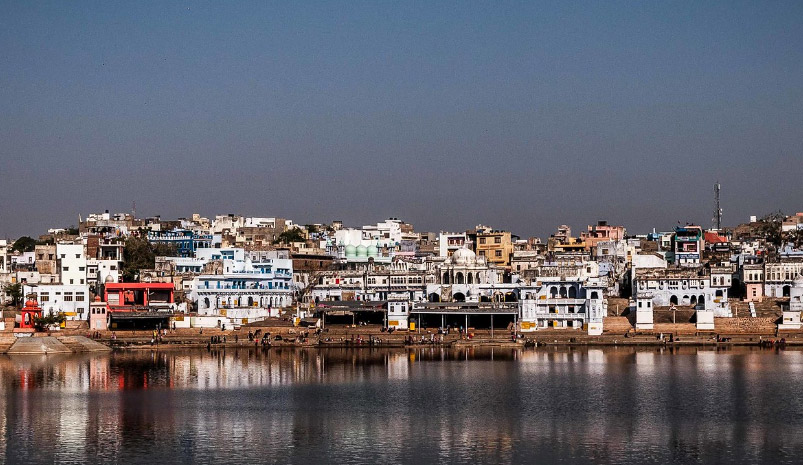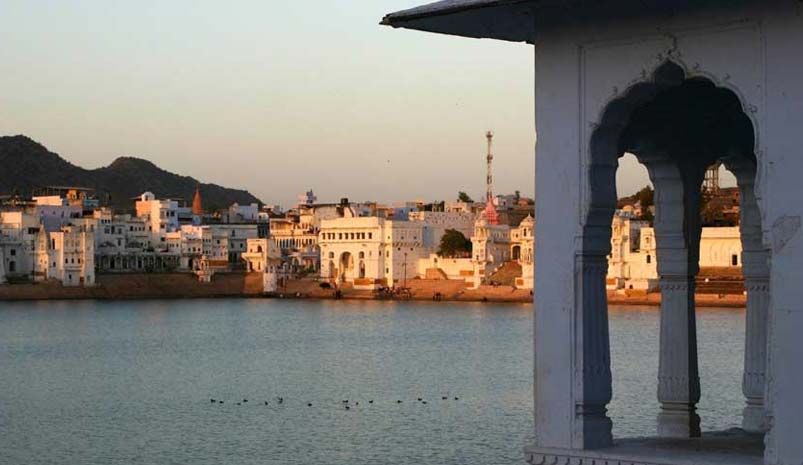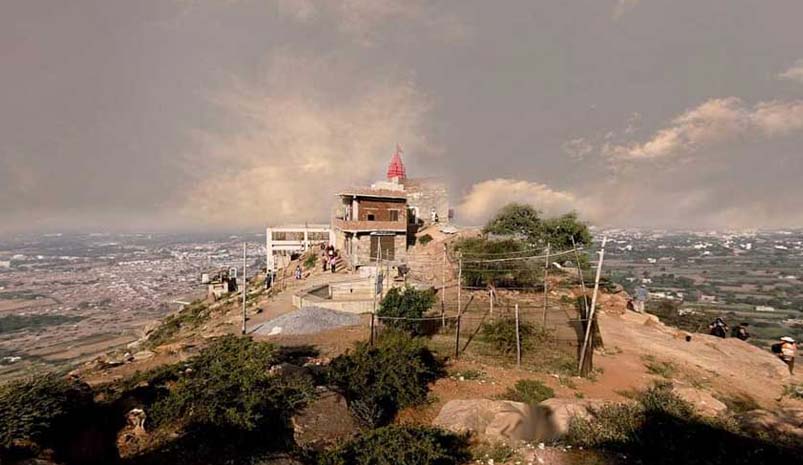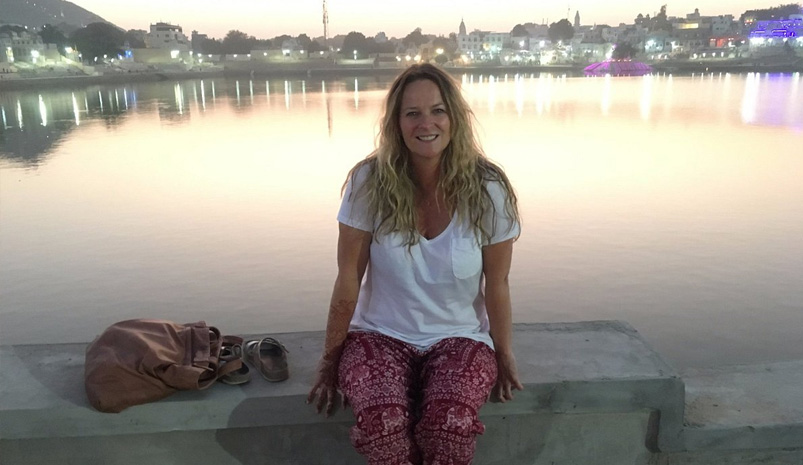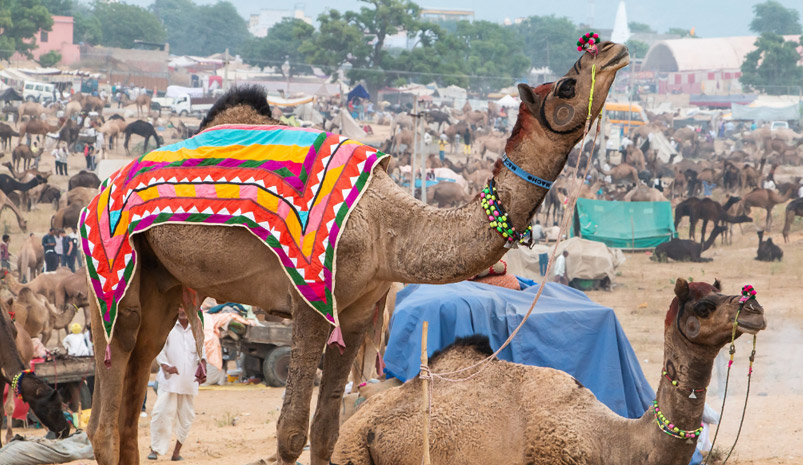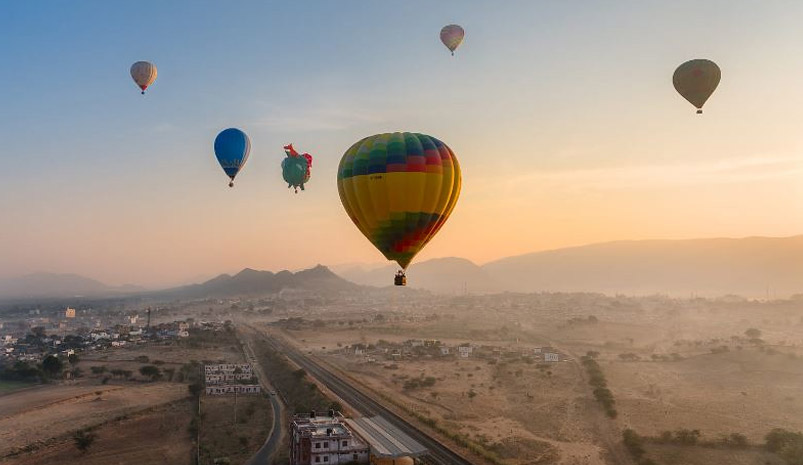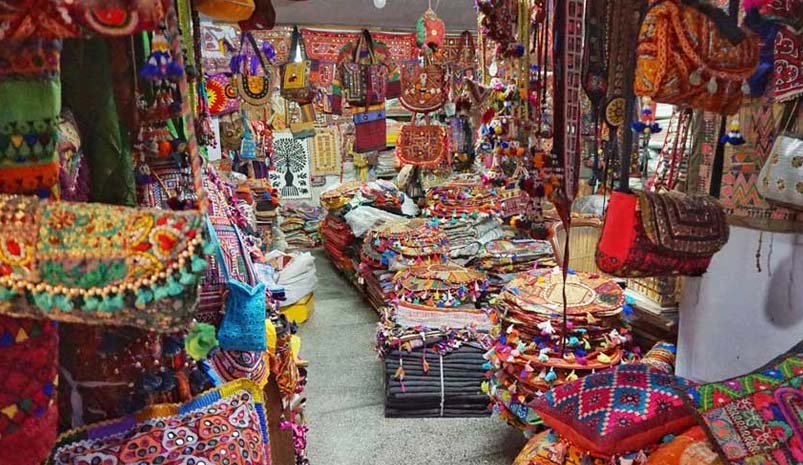Pushkar
Pushkar, an ancient city nestled in the northwest of Ajmer, stands as a beacon that draws innumerable travelers and devotees to the vibrant land of Rajasthan. With its rich historical tapestry, situated at an elevation of 510 meters, Pushkar is embraced by hills on three sides, while the majestic Nag Pahar, known as Snake Mountain, serves as a natural demarcation between Ajmer and this sacred abode. Renowned as the “rose garden of Rajasthan,” the fame of Pushkar’s exquisite roses transcends borders, as they are cherished and exported worldwide. This city’s allure lies not only in its mythical past but also in its timeless architectural heritage, captivating hearts with its timeless grandeur.
Legend has it that Lord Brahma, the divine creator of the Universe, bestowed upon the earth a lotus, which, upon touching the ground, manifested into a sacred lake. In homage to this celestial flower, the place came to be known as Pushkar. It is within this hallowed realm that one encounters the world’s sole temple dedicated to Lord Brahma. For adherents of Hinduism, embarking on a pilgrimage to Pushkar signifies an unparalleled spiritual journey, believed to bestow ultimate salvation upon the faithful.
Best Time to Visit in Pushkar
The best time to visit Pushkar is during the months of October to March, which is the winter season in the region. The weather during this time is pleasant and favorable for exploring the city and its attractions. The temperatures are moderate, ranging from around 15°C to 25°C (59°F to 77°F) during the day, with cooler evenings.
Pushkar hosts the famous Pushkar Camel Fair, which usually takes place in November. This vibrant and colorful event attracts a large number of tourists from around the world. It showcases a unique blend of cultural activities, camel races, folk performances, and trading of livestock. If you plan to attend the Pushkar Camel Fair, it is advisable to book your accommodations well in advance.
Overall, visiting Pushkar during the winter season allows you to enjoy pleasant weather, participate in festivals, and explore the city’s attractions comfortably.
Places to Visit in Pushkar
Pushkar Lake: As described in Hindu scriptures, the revered Pushkar Lake holds the esteemed title of ‘Tirtha Raj,’ signifying its status as the king of all pilgrimage sites. No pilgrimage is deemed complete without immersing oneself in the sacred waters of Pushkar Lake. Resplendent in its semi-circular shape and reaching depths of approximately 8-10 meters, the lake is adorned by 52 bathing ghats and adorned by over 400 temples, presenting a truly awe-inspiring spectacle.
Brahma Temple: Jagatpita Brahma Mandir, an abode dedicated to Lord Brahma, the Hindu deity of creation, stands in close proximity to the sacred Pushkar Lake. This ancient edifice, dating back nearly 2000 years, although its present structure was established in the 14th century. Amidst Pushkar’s vast array of over 500 temples, the Brahma Temple reigns supreme in its significance. Legends recount that Lord Brahma descended to Earth to perform a sacred yajna and chose this very site for his temple. In the 8th century, the esteemed Hindu philosopher Adi Shankara devoted himself to the temple’s renovation, while its current form is attributed to Maharaja Jawat Raj of Ratlam, who repaired and made slight modifications to it. The inner sanctum of the temple pays homage to Lord Brahma and his consort, Gayatri. Crafted from marble and stone slabs, the temple’s pinnacle (shikhara), adorned in a vibrant red hue, stands as a prominent landmark visible from afar. Notably, the temple features a distinct motif of the hamsa bird. During the Pushkar Fair, celebrated on Kartik Poornima, the town joyously commemorates a festival dedicated to Lord Brahma. Devout pilgrims fervently visit the temple following purifying baths in the sacred Pushkar Lake. The Brahma Temple has garnered recognition as one of the world’s ten most sacred places of worship and is hailed as one of the five revered pilgrimage destinations for Hindus.
Savitri Temple: Perched upon a hillock directly behind the Brahma Temple, the Savitri Temple pays homage to Goddess Savitri, Lord Brahma’s first wife. Ascending the long series of steps leading to the temple, one is rewarded with a panoramic vista of the lake, surrounding temples, and sprawling sand dunes. The presence of the sole Brahma Temple in Pushkar finds its origins in a curse cast by Savitri upon Lord Brahma for marrying another goddess, Gayatri, while commencing his yajna in Pushkar.
Pap Mochani Temple:
Pap Mochani Temple is a revered place of worship that holds significant spiritual importance. It is believed to have the power to cleanse sins and offer liberation to devotees who seek solace and spiritual upliftment. This sacred temple attracts countless devotees who come to seek divine blessings and find inner peace. With a serene ambiance and a sense of sacredness, the Pap Mochani Temple provides a space for devotees to reflect, pray, and experience a sense of spiritual renewal.
Pushkar Bazaar: Pushkar Bazaar is a vibrant and bustling market that entices visitors with its wide array of offerings. The market is a treasure trove of traditional handicrafts, exquisite jewelry, vibrant clothing, and aromatic spices, creating a delightful shopping experience. Stroll through the bustling lanes, immerse yourself in the vibrant colors, and engage with local artisans as you discover unique souvenirs and immerse yourself in the rich cultural heritage of Pushkar
